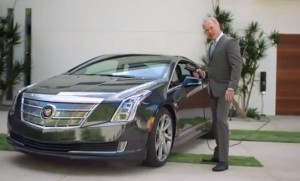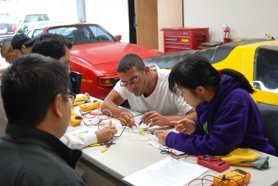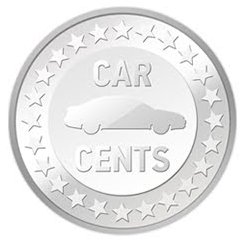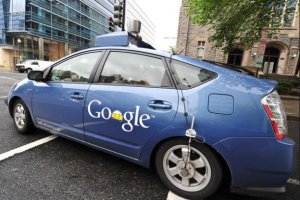Substantial HC Reductions to be Gained in the Capture of “Fugitive Transfer Emissions”
by Chris Hollerback
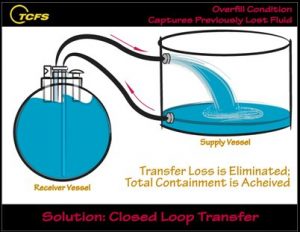 Heavy duty vehicles have seen major transformations in hydrocarbon emission reduction in recent years. This is based on engine manufacturers’ massive investments in new technology and the mandates of Ultra Low Sulfur Diesel, along with SCR/Urea after-treatments. The industry has transformed diesel from the worst pollutant into one of the cleanest and most economic fuels available.
Heavy duty vehicles have seen major transformations in hydrocarbon emission reduction in recent years. This is based on engine manufacturers’ massive investments in new technology and the mandates of Ultra Low Sulfur Diesel, along with SCR/Urea after-treatments. The industry has transformed diesel from the worst pollutant into one of the cleanest and most economic fuels available.
Truck engines and diesel fuel are two of several emissions sources that must be reduced to hit strict, ambitious federal standards to reduce greenhouse gas. So the big question is: “Where will the next significant reduction come from?” It is my belief that considerable gains can be realized through advances in fuel dispensing equipment. “Fugitive Transfer Emissions,” along with vapor purge, happens during the transfer of liquid and compressed gas refueling.
If the goal is to reduce hydrocarbons, wouldn’t it be prudent to capture as much of these emissions as well? With the exception of vapor recovery and on-board refueling vapor recovery (ORVR) in gasoline, this issue is currently “not on the radar” of the US Environmental Protection Agency (EPA). Consider that fugitive loss is a global occurrence and one that can be substantially corrected with significant benefits to the environment, the transportation industry, and the consuming public.
Diesel has secured the environmental future in the EPA’s focus of exhaust emissions. In spite of these major advances, future reductions of hydrocarbon emissions are still being demanded by the EPA for the heavy duty vehicles market.
The EPA’s focus for hydrocarbon reduction in transportation is currently limited to “exhaust” emissions, which by definition is the measurement of “unburned” fuel. Fugitive transfer emissions (FTEs) are the vapors or purge containing concentrated levels of raw fuel, in suspension, that “vent” in order to displace liquid or compressed gas into a fuel vessel. Venting is a necessary function with all dispensing equipment.
Venting occurs somewhere near the refueling point and always after the fuel meter. The concept of the proposed solution is a common sense plumbing adjustment that effectively moves the vent point back to the supply source capturing vapor, and overfills, in a closed loop. With that said, how significant are these losses, and what gains can be made through total containment?
I am singling out diesel refueling as a starting point to illustrate how significant FTE reduction can be. Diesel refueling raised my awareness of the issue and inspired the proposed solution.
Fifteen years ago I was introduced to the non-public side of fleet transportation through refueling operations at a major metropolitan bus facility. Facility hygiene conditions were, and still remain, appalling.
As an outsider, my first impressions were of how grimy the fuel barn was with puddles of fuel that were obvious slip hazards. Everything was coated with fuel throughout the property. The pungent odor of diesel was inescapable, even in the office areas. My initial questions were “How can people work under these conditions” and “Why isn’t someone doing something to correct it?”
Pressure cleanings were a weekly event with spot cleanings performed daily. “The nature of the fuel just gets on everything, you get used to it after a while.” This is the one comment that is consistently repeated and sums up the acceptance of the conditions industry wide. So what is the root cause of this rapid recurrence as a need for constant clean-up, and more importantly, can a solution be found to permanently correct it?
From a logistics stand point, the hectic activity to process 500 buses for the next day was fascinating. The buses all come in at once at days end, and stretch around the facility in an endless line.
“Hostlers” drive these vehicles into the fueling area, quickly connect a “high speed” fuel nozzle to a mating connection. Fuel is dispensed at an impressive 40 gallons per minute (GPM). The Hostler jumps back into the bus to sweep out trash and debris. (I still can’t shake the pungent smell of fuel.)
A “whistling” noise pierces the air during fueling; this is a safety indicator that the fuel tank is “pressurized” signaling the fuel nozzle is not to be removed until the whistling stops. This “safety whistle” is cleverly activated by pressure from within the tank, sort of like an industrial tea kettle. This whistle, combined with another pressure relief valve, is designed to dissipate tank pressure and a likely source for aerosol fuel releases. (All fuel tanks must relieve pressure or risk rupture. The trucking industry uses a standard nozzle and an over-sized filler neck that allows venting around the inserted nozzle.)
To confirm the theory in “MacGyver” fashion, I wrapped a handkerchief over the two suspect vent points, producing two oily damp spots. One source of contamination identified, but how significant is the output?
Despite the manufactures warnings, at this location, the fuel hose was repeatedly removed from each bus with the whistle still sounding to get to the next bus. This practice resulted in a back-pressure fuel spill, partially captured by a sludge pit.
As the hostler kicks the fuel door shut with his foot, fuel trails down the side of the bus and is tracked onto the tarmac out to the parking area. This tracking of fuel makes its way to storm drains with wash downs, rain, and snow melt run off.
Two sources of fuel release identified – what’s the volume for each and would there be a significant payback if these conditions could be corrected? The back-pressure spills were the most obvious, so I asked the obvious question “Why would they disconnect before the whistle stops if they know it will result in such a large fuel loss?” The answer was the fuel loss was acceptable as an offset for the extra minutes saved on each bus to reduce labor expense and time.
The fuel “spilled” was less than 1% of total fuel purchased and fuel was not “lost” as it was captured in the sludge pit and sold to “re-processers.”
The calculation for back-pressure spills rounded to .09% equated to 169,000 gallons annually based on this total fleet’s volume. The collected fuel is contaminated and not suitable for reuse and is sold for less than purchase.
Most facilities avoid overfills by properly waiting for tank pressure to dissipate; However, the “atomization” that occurs remains unavoidable due to dispenser design. Overfills, back-pressure spray, and atomized fuel losses all occur after the fuel meter, so for the most part, have gone unnoticed, and more importantly, unaccounted for.
What about the atomized fugitive loss? Is this a big deal? Specific measurement will be calculated with (yet to be determined) university collaboration, but viewed under an infrared camera, the visible “cloud” is significant. A little digging produced a citable reference regarding “fugitive transfer emissions” in an early study of vapor recovery. This was a collaborative effort which included the EPA and American Petroleum Institute (API).
The collaborative calculation states the fugitive transfer loss to be 8.4 lbs of liquid for every 1,000 gallons dispensed. (Conversion is approximate to 1.5 gallons of liquid fuel.)
This specific reference was performed with gasoline which admittedly has very different properties from diesel, but as a liquid transfer, this serves as a reference point for the theory. Gasoline is dispensed at 10 GPM whereas diesel fuel is commonly dispensed at 30 GPM at a travel plaza, and 40 GPM or better, through the pressurized system utilized by 98% of mass transit groups.
The transit group referenced dispenses 18 million gallons of diesel fuel in a year with a total fleet of 1,300 buses. The atomized loss at 1.5 gallons per 1,000 gallons dispensed would equal a 27,000 gallon loss which contaminates the site and places employees at unnecessary occupational risks. This volume in fugitive loss, if captured, would obviously better serve the fleet as usable fuel and provide a cleaner and healthier work environment for the total labor force.
Multiple regulatory programs seek reductions of contamination sources such as: The Air Pollution Act, Water Pollution Act, Spill Prevention, Control and Countermeasure (SPCC), Environmental Justice Act, SmartWays Partnership, Map 21, and OSHA’s Permissible Exposure Limits (PEL) guidelines.
Every commercially available fuel dispenser has a measurable degree of fugitive transfer loss. Diesel fuel does not evaporate as gasoline, but shares some of the same toxins such as benzene. Consequently, vapor recovery has not been required for use in diesel fuel dispensing. Due to the fact that it does not evaporate is reason for capture.
Looking beyond just exhaust emissions will further environmental and health efficiencies. Challenging antiquated dispensing processes provides opportunity to further reduce heavy duty vehicle emissions to improve environmental and occupational health. A closed loop containment dispensing assures that fuel consuming fleets are actually getting all the energy they are purchasing. That’s a “Win-Win” and reasons to consider the change.
Chris Hollerback has a 30 year background in facilities management and process improvement. He is the designer and utility patent holder of the Total Containment Fueling System (TCFS). The patent awards 43 claims of innovations above the state of the art in dispensing. A proof of concept prototype has been developed to validate a solution for fleet application as a logistics tool. Hollberback’s LinkedIn page offers a summary of the TCFS.
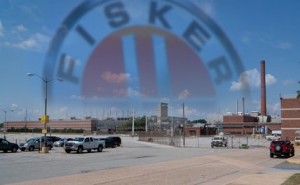 Fisker Automotive’s new owner has been shedding more light on where the luxury extended range sports carmaker is headed. Pin Ni, head of Wanxiang America (the US division of Wanxiang Group, China’s largest auto parts company), told Automotive News that the Karma will restart production as early as this year at its Finland plant; the Karma will be sold again in the US and Europe. Production could happen in the US as well, once sales move forward. Ni said there’s a “potential partner out of Michigan.” There’s always the former General Motors plant in Delaware, but Fisker Automotive may stay away from it. Long term, Wanxiang may set up production in China where there’s a lot of government purchase subsidies for cars like the Fisker Karma. Ni also commented on the Fisker Atlantic; Wanxiang wants to complete development of this mid-sized plug-in hybrid. It’s positioned to be more affordable model that is likely to be produced at higher volume than the Karma.
Fisker Automotive’s new owner has been shedding more light on where the luxury extended range sports carmaker is headed. Pin Ni, head of Wanxiang America (the US division of Wanxiang Group, China’s largest auto parts company), told Automotive News that the Karma will restart production as early as this year at its Finland plant; the Karma will be sold again in the US and Europe. Production could happen in the US as well, once sales move forward. Ni said there’s a “potential partner out of Michigan.” There’s always the former General Motors plant in Delaware, but Fisker Automotive may stay away from it. Long term, Wanxiang may set up production in China where there’s a lot of government purchase subsidies for cars like the Fisker Karma. Ni also commented on the Fisker Atlantic; Wanxiang wants to complete development of this mid-sized plug-in hybrid. It’s positioned to be more affordable model that is likely to be produced at higher volume than the Karma.
